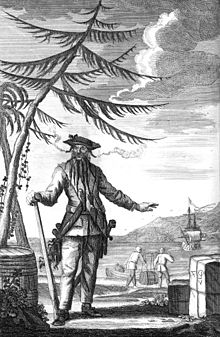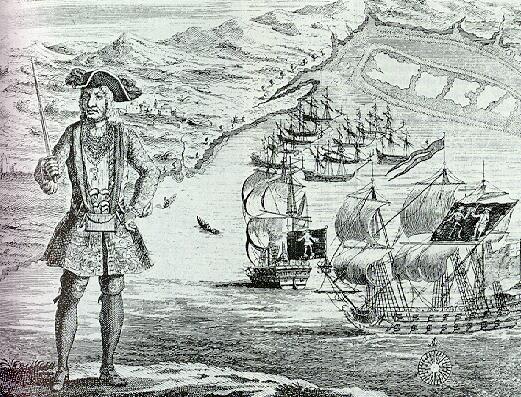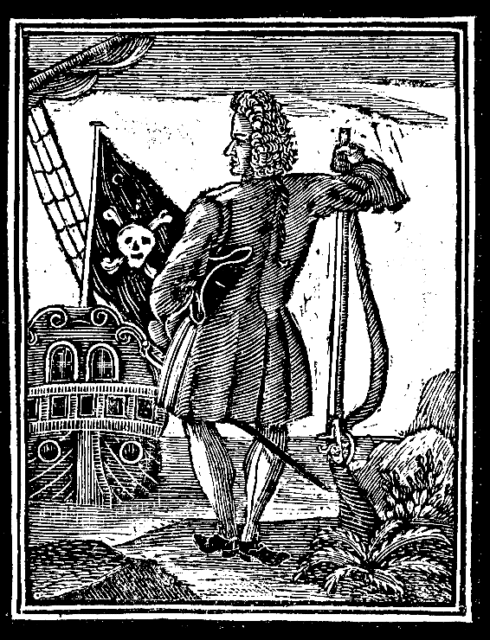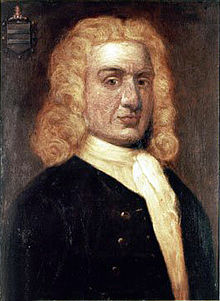The Golden Age of Piracy was a time when thousands of buccaneers, privateers, and pirates roamed the seas, plundering merchant ships and treasure ships.
Many of these pirates became very famous, including Black Bart Roberts, Captain William Kidd, and Blackbeard. Their names are synonymous with attacking and robbing ships at sea. But what about their seaworthy pirate ships? Many of the ships became as famous as the men who sailed them. Here are some of the most famous pirate ships in history.

Edward Teach, better known as Blackbeard, was one of the most dreaded pirates in history. In November 1717, he captured the colossal French slaving ship La Concorde. He mounted 40 cannons on board La Concorde, and after the refit, he renamed her Queen Anne’s Revenge. Armed with a 40-cannon warship, Blackbeard ruled the waves of the eastern coast of North America and the Caribbean.
It is said that the Queen Anne’s Revenge ran aground in 1718 and was abandoned. Researchers found a sunken ship in the waters off North Carolina in 1996 that they believe to be the Queen Anne’s Revenge. Some of the salvaged items including an anchor and a bell are on display in local museums.
Bartholomew Roberts was better known as Black Bart. Over a three-year period, he was one of the most successful pirates of all time, looting and capturing hundreds of ships and sinking many more. Black Bart went through several different flagships during this period, and they all carried the same name – Royal Fortune. His largest flagship was a 40-cannon monstrosity manned by 157 men, and it could fight it out with any British Royal Navy ship of the time. Black Bart Roberts was aboard his Royal Fortune when he met his fate in February 1722 in a battle against the the Swallow, a British man-of-war vessel.
Pirate Sam Bellamy seized the Whydah, a large British slave trade vessel, in February of 1717. The pirate and his plundering crew were able to mount 28 cannons on her and for a brief time they terrorized the shipping lanes of the Atlantic. The pirate ship Whydah did not last long, however. She was caught in a terrible storm off Cape Cod in April 1717, barely two months after Bellamy first captured her.
In 1984, searchers discovered the wreck of the Whydah and thousands of artifacts were recovered, including the ship’s bell. A museum in Provincetown, Massachusetts has an exhibit that displays many of the artifacts from the pirate ship.

Stede Bonnet became a pirate from a most unlikely background. He lived in Barbados with his wife and family and was a wealthy plantation owner. At about the age of 30, he suddenly decided to become a pirate. In the history of ‘The Golden Age of Piracy,’ he is probably the only pirate ever to buy his own ship.
In 1717, at his cost, he outfitted a ten-gun square rigger he called The Revenge. He told the officials he was going to get a privateering license; instead, he immediately began raiding as soon as he left the harbor.
Bonnet and The Revenge met up with Blackbeard after losing a battle. Blackbeard then used the Revenge for a while as Bonnet “took a rest.” Bonnet was later captured in battle after being betrayed by Blackbeard, and he was executed on 10 December 1718.

Captain William Kidd was a legend among privateers and seafarers. In 1689, he had seized a large French flagship while sailing in this capacity and he later married a wealthy heiress. In 1696, he persuaded some rich friends to fund one of these privateering expeditions. He outfitted his ship, The Adventure Galley, a 34-gun behemoth, and went into the business of hunting French vessels and pirates.
However, he had a bad luck, and his crew compelled him to turn pirate not long after they had set sail. Later, in his mighty pirate ship, he returned to New York and turned himself in, hoping to clear his name, but he was hanged anyway.
In 1694, the King of Spain had the English ship Charles II under his command. On board was an officer by the name of Henry Avery. After months of poor treatment, the sailors on board were ready to mutiny and Avery was willing to lead them. Captain Avery and his fellow mutineers commandeered the Charles II on 7 May 1694 and renamed her Fancy. Avery and his crew then became notorious pirates. They mostly sailed the Indian Ocean searching for plunder, and they soon struck gold. In July 1695, they captured the Ganj-i-Sawai, the ship carrying the treasure of the Grand Moghul of India. It was one of the largest scores ever made by a pirate during this ‘golden age’ of piracy. Avery sailed the Fancy back to the Caribbean where most of the pirate’s treasure was sold. Avery then disappeared from history, but the pirate and his flagship did not fade from popular legend.
When the Gambia Castle sailed for Africa in 1721, George Lowther was a second mate on board. The Gambia Castle was a mid-sized English Man-of-War, and she was carrying a garrison of soldiers to a fortress on the African coast. When they arrived, the soldiers were not at all satisfied with their provisions and accommodations. Lowther no longer had the approval of his captain and persuaded the dejected garrison to enlist with him in taking over the ship. They commandeered the Gambia Castle, renamed her Delivery, and embarked on beginning their pirate’s career.

Lowther had a relatively long career as a pirate and ultimately swapped the Delivery for a more seaworthy ship.
Read another story from us: Weapons that were fit for a pirate to use on the seven seas
Not long afterward, Lowther lost his ship and was marooned on a deserted island where he eventually passed away.
